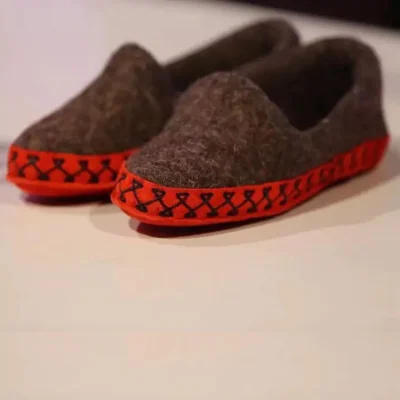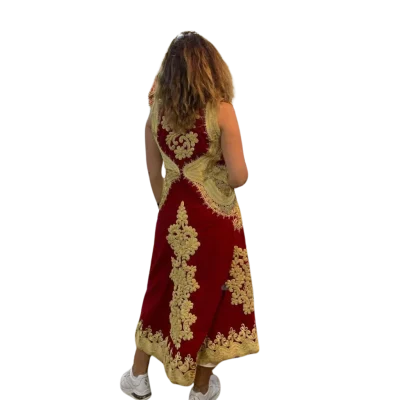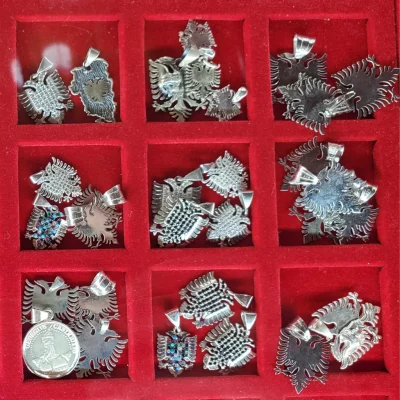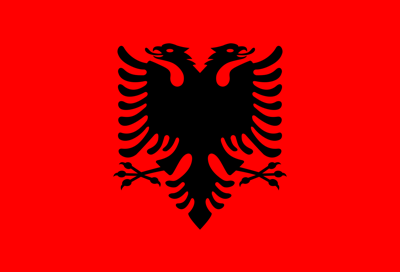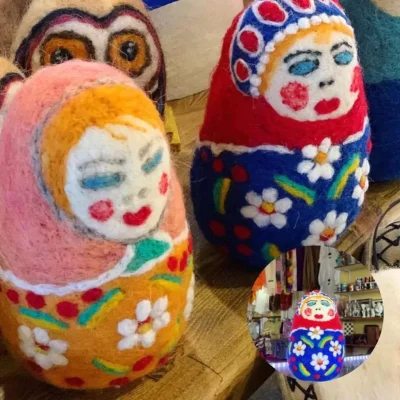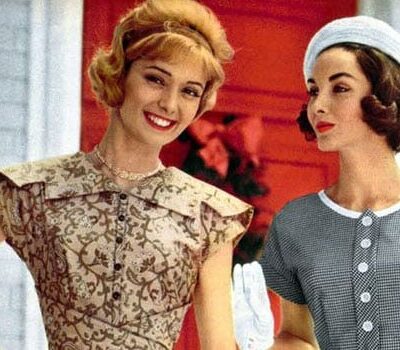Table of Contents
Traditional Albanian outfits are more than just clothing—they are a living testament to Albania’s rich history, culture, and identity. From the fustanella, worn by men, to the intricate xhubleta that women in Northern Albania don, each piece of traditional clothing reflects the deep-rooted traditions of the country. With over 500 variations, Albanian national clothes are not only diverse but also rich in symbolism, incorporating ancient motifs such as the double-headed eagle, suns, and stars.
The Albanian traditional outfit has its origins in Illyrian times, with clear influences from Byzantine, Ottoman, and even Roman eras. Throughout history, these outfits have adapted, but they have always maintained their symbolic significance. For example, the fustanella has been a staple of men’s traditional Albanian clothing, worn by warriors and villagers alike, symbolizing pride and bravery.
Today, traditional Albanian outfits are celebrated not only in Albania but also in Albanian diaspora communities across the world, including the Arbëreshë in Italy and the Arvanites in Greece. Whether for weddings, national holidays, or cultural festivals, these outfits continue to play an essential role in preserving Albania’s cultural identity.
The traditional Albanian costume is characterized by rich embroidery, vibrant colors, and intricate craftsmanship, with each region in Albania offering its own unique variation. Whether you’re looking at the Albanian national dress in the south or the xhubleta of the north, it is clear that the history and tradition embedded in these garments are as alive today as they were centuries ago.
The Albanian traditional clothes for both men and women include a variety of elements, from opinga (traditional shoes) and çorape (socks) to elaborate jewelry such as Albanian bracelets and necklaces featuring the iconic Albanian eagle. The symbolism behind these items speaks to Albania’s resilience and cultural pride, making Albanian traditional wear not just fashion, but a key component of national identity.
The Historical Roots of Traditional Albanian Clothing
The Influence of Illyrian and Byzantine Traditions
The historical roots of traditional Albanian clothing can be traced back thousands of years, with influences from Illyrian, Byzantine, and Ottoman periods. Each Albanian traditional outfit carries a unique narrative, shaped by Albania’s historical interactions with other cultures and civilizations. The use of ancient Illyrian symbols such as the double-headed eagle and motifs of suns, moons, and stars is still evident in modern variations of Albanian traditional dress, showcasing the deep connection between Albania’s past and present.
In Northern Albania, the traditional xhubleta is one of the oldest forms of Albanian traditional clothing. This bell-shaped skirt for women, made from wool and richly decorated with embroidery, is a living relic of Illyrian civilization. Recognized as part of UNESCO’s intangible cultural heritage, the xhubleta is more than just a garment—it represents the continuity of ancient customs in Albanian culture. In contrast, Southern Albanian clothing incorporates more Ottoman and Byzantine influences, particularly in the fustanella, a pleated skirt worn by men.
The fustanella, widely associated with Albanian national costume, has ancient roots. Worn by warriors, villagers, and nobles alike, it is emblematic of Albania’s history of resistance and pride. The fustanella is still worn during major celebrations and cultural events, and it remains a central piece in modern Albanian national dress.
Albanian National Costume Through the Ages
Throughout history, Albanian traditional clothes have evolved, but their symbolic importance has remained unchanged. Whether it’s the protective power attributed to Albanian jewelry or the magical functions of the xhubleta and fustanella, these garments offer a window into the spiritual and cultural life of the Albanian people. By wearing traditional attire, Albanians not only honor their ancestors but also keep their cultural identity alive in the modern world.
Albania’s varied geography also plays a significant role in shaping its clothing traditions. The mountainous regions in the north and the coastal areas in the south exhibit distinct differences in fabric, color, and style, reflecting the local environment and lifestyle. In the northern regions, heavy woolen fabrics are common, while southern Albania is known for lighter fabrics and more intricate embroidery, highlighting the adaptability of Albanian traditional clothing to different climates and terrains.
The Albanian traditional costume is a testament to the resilience and adaptability of the Albanian people. Through centuries of change, these garments have preserved the cultural essence of Albania, ensuring that the Albanian traditional outfit remains a symbol of national pride and historical continuity.
Key Elements of Traditional Albanian Men’s Clothing
Traditional Albanian men’s clothing is a distinctive representation of Albania’s cultural heritage, combining historical significance with regional diversity. The fustanella, xhamadan, tirqe, and opinga are all essential parts of Albanian national clothes that reflect the pride and resilience of Albanian men throughout history. Each element carries a rich tradition and cultural symbolism, passed down through generations.
Albanian Accessories
Albanian Clothes for Kids
Albanian Instruments
Albanian Jewelry
Albanian Shoes
Albanian Traditional Dresses
Papuçe
Qeleshe (Traditional Skullcap)
The Fustanella: Albania’s National Dress
The fustanella, a pleated skirt-like garment, is perhaps the most recognizable part of Albanian men’s traditional outfit. It has ancient origins in Albania, believed to date back to the 4th-3rd century BCE. Worn by warriors and nobility alike, the fustanella became a symbol of bravery and national pride in Albanian History. Today, it is still a prominent feature in Albanian national costume, particularly in Southern Albania and regions like Kosovo and North Macedonia.
The Xhamadan: The Albanian Traditional Vest
Xhamadan: A Symbol of Status in Albanian Clothing
The xhamadan is a traditional sleeveless vest worn by men across Albania. This garment is usually made from wool and features intricate embroidery, often using gold or silver thread. The xhamadan is an essential part of Albanian traditional clothing, paired with the fustanella or tirqe. The vest is a status symbol, with wealthier individuals displaying their social rank through the richness of their vest’s embroidery.
The Xhamadan’s Embroidered Details and Cultural Significance
Historically, the xhamadan was worn by men throughout the Balkans, including Kosovo, North Macedonia, and the Albanian Arbëreshë communities in Italy. Today, it remains an important part of Albanian national costume, especially during cultural performances and official ceremonies.
Tirqe: Traditional Albanian Pants
Tirqe in Albanian National Clothes
Tirqe are narrow woolen trousers traditionally worn by men in Northern Albania, Kosovo, and North Macedonia. These pants are heavily embroidered with black cords, particularly along the seams, and are often paired with a xhamadan or jelek (vest).
Tirqe and Their Role in Albanian Folk Clothing
The tirqe offer a distinct look, symbolizing the elegance and strength of Albanian men’s traditional clothing. In colder regions, these woolen pants provided both warmth and durability.
Brekushe and Poture: Traditional Albanian Trousers
The Ottoman Influence on Brekushe and Poture
In contrast to tirqe, brekushe are wider trousers worn primarily in Central and Southern Albania. These garments, along with poture—short, Ottoman-influenced trousers—are often made from cotton or wool, reflecting the cultural exchange that took place in Albania during the Ottoman Empire. These traditional trousers highlight the diversity within Albanian traditional dress, with each region adapting clothing styles to its specific needs and influences.
Opinga: Traditional Albanian Shoes
Opinga: A Staple of Traditional Albanian Shoes
Opinga are traditional leather shoes worn by both men and women throughout Albania, Kosovo, and Albanian-speaking regions in North Macedonia and Montenegro. These shoes are handmade and feature leather straps, with some varieties adorned with woolen pom-poms. Opinga are essential in completing the Albanian national outfit, offering both durability and cultural significance. They were also widely worn in rural areas, where durability and practicality were crucial.
Opinga’s Roots in Illyrian Culture
The origins of opinga trace back to ancient Illyrian times, and these shoes are seen as a key element of Albanian traditional wear. They are still worn today during cultural events and performances, keeping this part of Albania’s heritage alive.

Papuce te personalizuara (Handmade)
7,000.0 LOriginal price was: 7,000.0 L.6,500.0 LCurrent price is: 6,500.0 L.
Key Elements of Traditional Albanian Women’s Clothing
Traditional Albanian women’s clothing is as diverse and symbolic as the country’s landscape and history. Richly embroidered, vibrant in color, and deeply symbolic, the garments reflect the cultural, social, and religious beliefs of the Albanian people. The key elements of Albanian traditional clothing for women include the xhubleta, këmishë e gjatë dhe përparëse (long shirt and apron), and an array of jewelry and accessories that make these outfits not only beautiful but also deeply meaningful.
Xhubleta: UNESCO-Recognized Albanian Folk Dress and Illyrian Heritage of the Xhubleta in Northern Albania
The xhubleta is one of the most iconic and ancient pieces of Albanian traditional clothing for women, primarily worn in Northern Albania. This bell-shaped skirt is intricately crafted from woolen strips and sewn horizontally to create its distinctive flared shape. The xhubleta is not just a skirt; it is a piece of living history, with roots that trace back to Illyrian civilization. The xhubleta has been recognized by UNESCO as part of Albania’s intangible cultural heritage, a testament to its significance in Albanian traditional costume.
Xhubleta’s Cultural and Religious Symbolism
The xhubleta symbolizes fertility, strength, and feminine power. Traditionally, it is paired with a white blouse, leather opinga shoes, and çorape (long socks). The skirt’s elaborate design often includes embroidered symbols like eagles, crosses, and religious motifs, making it a deeply spiritual garment. Women wear the xhubleta during important ceremonies, such as weddings, reflecting its role in connecting Albania’s past with its present.
Këmishë e Gjatë dhe Përparëse (Long Shirt and Apron)
The Regional Variations of Albanian Traditional Clothes for Women
Another important element of Albanian traditional dress for women is the këmishë e gjatë (long shirt), often accompanied by an embroidered përparëse (apron). The këmishë e gjatë is typically a long-sleeved blouse, with variations in design depending on the region. In some parts of Northern Albania, the sleeves are wide and richly decorated with lace, while in the south, women’s shirts may have tighter sleeves with bold patterns.
The Use of Long Shirts and Aprons in Albanian Traditional Costume
The përparëse (apron) varies in size and decoration depending on the occasion. In certain regions, women wear two aprons—one in front and one in the back—adding layers to the outfit. The përparëse can be highly elaborate, with bright colors and intricate embroidery, particularly for festivals or wedding attire. This combination of the long shirt and apron is a staple of Albanian traditional clothing, reflecting the cultural diversity of the country’s regions.

Veshje tradicionale burrash (Jugu)
28,000.0 LOriginal price was: 28,000.0 L.26,000.0 LCurrent price is: 26,000.0 L.
Kostum popullor per burra (Jugu)
30,000.0 LOriginal price was: 30,000.0 L.28,600.0 LCurrent price is: 28,600.0 L.
Kostum popullor per femije (Vajza)
8,300.0 LOriginal price was: 8,300.0 L.7,800.0 LCurrent price is: 7,800.0 L.
Jelek me fije ari
83,000.0 LOriginal price was: 83,000.0 L.80,700.0 LCurrent price is: 80,700.0 L.
Jelek i kuq me fije ari
110,000.0 LOriginal price was: 110,000.0 L.104,000.0 LCurrent price is: 104,000.0 L.
Veshje e kompletuar Mirdite (100 vjecare)
35,000.0 LOriginal price was: 35,000.0 L.32,500.0 LCurrent price is: 32,500.0 L.
Jewelry and Accessories in Traditional Albanian Outfits
Traditional Albanian Jewelry in Weddings and Festivals
Jewelry plays a vital role in traditional Albanian outfits, especially during important life events such as weddings. Women’s Albanian jewelry often includes gold necklaces, bracelets, and headpieces decorated with coins, which symbolize wealth and social status. The Albanian eagle is a common motif in these accessories, particularly in Albanian eagle necklaces and pendants.
Albanian Jewelry: Metal Ornaments and Their Symbolic Meanings
In addition to metal ornaments, many women wear silver jewelry, which was believed to offer protection and have magical properties. For brides, metal ornaments were not just for decoration but were considered essential for ensuring a prosperous and protected marriage. These traditions continue today, with Albanian cultural clothing still incorporating elaborate jewelry into wedding attire and other special occasions.
The use of scarves and headpieces is also an important feature of women’s Albanian traditional dress. In many regions, women cover their heads with embroidered kerchiefs or scarves, particularly after marriage, symbolizing modesty and adherence to cultural norms. These scarves often feature beautiful designs that complement the rest of the outfit.

Medaljon Filigrami me flutur (Handmade)
3,000.0 LOriginal price was: 3,000.0 L.2,000.0 LCurrent price is: 2,000.0 L.
Medaljon Filigrami (Handmade)
4,000.0 LOriginal price was: 4,000.0 L.3,300.0 LCurrent price is: 3,300.0 L.
Aksesore per varse
1,000.0 LOriginal price was: 1,000.0 L.500.0 LCurrent price is: 500.0 L.
Varse te ndryshme me Shqiponje
2,500.0 LOriginal price was: 2,500.0 L.1,000.0 LCurrent price is: 1,000.0 L.
Regional Variations in Traditional Albanian Clothing
Albania’s diverse geography and rich history have given rise to a wide variety of traditional Albanian clothing, with distinct styles found in each region. From the rugged mountains of the north to the coastal areas of the south, the Albanian national dress showcases a range of fabrics, designs, and cultural influences. These regional variations reflect not only the practical needs of the environment but also the cultural exchanges that have shaped Albania throughout its history.
Northern and Southern Albanian Traditional Clothing
The northern regions of Albania, including Mirdita, Shkodra, and Malësia e Madhe, are known for their bold and rugged clothing styles. One of the most iconic garments is the xhubleta, a bell-shaped skirt worn by women in these areas. The xhubleta symbolizes Albania’s Illyrian heritage and features intricate designs, including religious motifs like crosses and eagles. In contrast, northern men’s clothing is characterized by heavy wool fabrics, often worn with tirqe (traditional pants) and xhamadan (vests).
In Southern Albania, the clothing tends to be more delicate and heavily influenced by Ottoman and Byzantine styles. The fustanella, worn by men, is particularly prominent in regions such as Labëria and Epirus. Southern Albanian women’s clothing often features vibrant embroidery, silk fabrics, and lighter materials compared to the thick wool used in the north. These outfits are typically adorned with elaborate Albanian jewelry, including gold necklaces, bracelets, and headpieces that reflect the region’s prosperity.
Mirdita Traditional Albanian Dress and Its Unique Features
The Mirdita traditional dress stands out for its simplicity and adherence to Albanian roots, with minimal Ottoman or Slavic influences. This region, located in northern Albania, has preserved many elements of Albanian traditional clothing that date back to pre-Ottoman times. For men, the fustanella was widely worn along with brezi (a traditional belt) and silver ornaments. Women in Mirdita, especially brides, wore elaborate headpieces and metal ornaments believed to have magical properties that ensured protection and good fortune during marriage.
The wedding attire in Mirdita often includes a combination of bold, colorful garments, with metal jewelry playing a significant role in the bride’s ensemble. The heavy use of head ornaments, belts, and bracelets demonstrates the cultural importance of Albanian jewelry in this region. Unlike other areas in the Balkans, where women wore jewelry to indicate social status, in Albania, the ornaments carried spiritual significance as well.
Labëria’s Simple and Elegant Albanian Wedding Dress
In Labëria, a region in Southern Albania, the traditional wedding dress is characterized by its simplicity. Unmarried women were expected to wear modest clothing, often without jewelry, and to cover their hair with a scarf. Only upon marriage would women adorn themselves with jewelry and more elaborate attire. The Labëria wedding dress features a white or black blouse paired with an intricately embroidered vest and a full skirt. This minimalist style, coupled with gold chains and traditional scarves, reflects the cultural values of modesty and simplicity in southern Albania.
Albanian Folk Clothing: Regional Differences in Style and Symbolism
Regional variations in Albanian folk clothing are not just about aesthetic differences; they also carry deep cultural symbolism. In the north, clothing designs are often influenced by Illyrian and Catholic traditions, while the south showcases more Ottoman and Orthodox elements. The double-headed eagle, a powerful symbol of Albania, frequently appears in both northern and southern attire, though it is often more pronounced in the designs from the north.
The use of color in Albanian traditional outfits also varies by region. In Northern Albania, darker, more muted colors like black and brown are common, symbolizing strength and resilience. In Southern Albania, brighter colors such as red, gold, and white are often seen, reflecting the influence of Byzantine and Ottoman aesthetics.
The regional diversity of Albanian traditional clothing is a testament to the country’s complex history and the cultural exchanges that have shaped its identity. From the xhubleta of the north to the fustanella of the south, each region’s clothing tells a unique story of survival, adaptation, and cultural pride.
Modern Adaptations of Traditional Albanian Outfit
As Albania embraces modernity, its traditional clothing continues to evolve while retaining its rich cultural heritage. Designers and fashion enthusiasts are increasingly incorporating elements of Traditional clothes of Albania into contemporary fashion. The Albanian traditional costume, once reserved for weddings, national celebrations, and folk festivals, is now being reimagined for everyday wear, ensuring that Albania’s sartorial history remains relevant in the 21st century.
The Evolution of Albanian Traditional Clothes in Modern Fashion
Modern Albanian designers are breathing new life into traditional Albanian clothing by blending historical elements with contemporary styles. The fustanella, a garment once worn by warriors and villagers, is now featured in modern collections as a statement piece symbolizing strength and heritage. Similarly, the xhubleta, recognized for its UNESCO heritage status, has inspired many designers to create updated versions that maintain the garment’s cultural significance while adding a modern twist.
Albanian traditional outfits are now seen not only during cultural performances and national holidays but also in fashion shows and runways across the globe. By incorporating traditional elements such as embroidered xhamadans and opinga shoes, modern Albanian fashion pays homage to the country’s cultural past while embracing the future.
How Albanian Traditional Outfits are Worn Today
Today, traditional Albanian clothing is still widely worn during significant life events such as weddings, baptisms, and festivals. In these settings, both men and women wear their region’s traditional garments, often adding modern touches, such as refined embroidery or updated silhouettes, to reflect contemporary tastes.
For example, brides in northern Albania may still wear the xhubleta, but with subtle changes to the fabric or pattern to make it more comfortable or suited to modern trends. Similarly, the fustanella has been redesigned with lighter materials for easier wear, while still retaining the pleats and length that define this iconic garment.
Fashion-conscious Albanians, particularly the younger generation, are also incorporating traditional accessories such as Albanian jewelry into their everyday wardrobes. Gold necklaces, bracelets, and Albanian eagle pendants add a touch of national pride to even the most modern outfits, ensuring that traditional elements remain alive in daily fashion.
Albanian Designers Reviving Traditional Clothes for Modern Audiences
Several Albanian designers have taken on the mission of reviving and modernizing traditional Albanian outfits. By adding contemporary flair to Albanian traditional clothes, they are helping bridge the gap between the old and the new. These designers draw inspiration from Albanian national clothes, infusing their collections with elements like intricate embroidery, vibrant colors, and unique cuts found in garments like the tirqe and xhamadan.
One notable trend is the use of traditional Albanian fabrics like wool and silk, combined with modern tailoring techniques, to create fashion-forward pieces that still reflect the country’s heritage. These efforts not only preserve Albanian cultural clothing but also promote it on a global stage, with modernized traditional garments appearing in international fashion shows and cultural festivals.
Albanian fashion continues to draw on the strength of its traditional clothing, ensuring that future generations stay connected to their roots. Whether through traditional fustanella-inspired skirts, xhubleta-like dresses, or modern accessories inspired by ancient Albanian jewelry, the past remains an integral part of Albania’s fashionable future.
Preserving Albanian Cultural Heritage Through Clothing
The preservation of Albanian traditional clothing is crucial in maintaining the country’s cultural identity and historical legacy. From the ancient Illyrian roots of garments like the xhubleta to the more recent Ottoman influences on the fustanella and poture, these pieces of Albanian national clothes are much more than just attire—they are symbols of a nation’s resilience, pride, and heritage.
Craftsmanship in Albanian Traditional Outfit
Traditional Albanian fashion is deeply connected to craftsmanship, with most garments handmade using techniques passed down through generations. Traditional Albanian clothes are often handmade, with fabrics woven using looms. The materials used, such as wool, silk, and cotton, are locally sourced. Weaving looms are still used today to create the fabrics for Albanian cultural clothes, with natural materials like wool and silk. Embroidery is a significant feature of the Traditional Albanian Outfit, with regional variations showcasing different rich colors and intricate patterns.
Efforts to Preserve and Reproduce Traditional Albanian Outfits
The preservation of Albanian traditional clothes has become a concerted effort by museums, cultural institutions, and local communities. Many of Albania’s most iconic garments, such as the xhubleta, fustanella, and tirqe, are housed in national museums, carefully preserved to showcase their intricate craftsmanship and historical significance.
In recent years, there has been a resurgence of interest in reproducing traditional Albanian outfits, especially for use in festivals, national holidays, and weddings. Artisans and local craftsmen are using traditional methods, such as loom-weaving and hand-embroidery, to recreate historical garments that remain faithful to the original designs. These reproductions help ensure that the knowledge and skills required to produce these garments are passed down through generations.
Many festivals and cultural events in Albania, such as the Gjirokastër National Folklore Festival, feature performances where participants don traditional Albanian outfits, showcasing the enduring significance of these clothes. These festivals play a key role in keeping Albanian traditional wear alive and relevant in contemporary Albanian society, while also introducing it to an international audience.
Albanian Museums and Festivals Dedicated to Traditional Clothes
Several museums across Albania are dedicated to preserving the country’s cultural heritage, with traditional Albanian costumes taking center stage in their collections. Museums such as the National Historical Museum in Tirana house an impressive collection of traditional Albanian clothing, representing all regions of the country. These garments, including the iconic Albanian national dress, are not only preserved but also showcased to the public as symbols of Albania’s rich history.
In addition to museums, cultural festivals remain a critical part of preserving Albanian traditional outfits. The Gjirokastër Folk Festival is one of the largest cultural events in Albania, where performers from different regions of the country wear their traditional costumes, dance, and play folk music. Events like these help keep the tradition of Albanian cultural clothing alive, while fostering a sense of pride in the younger generations.
The Importance of Reproducing Albanian Traditional Costumes
The reproduction of Albanian traditional clothes is not only important for cultural preservation but also for ensuring that these garments remain a living part of Albania’s identity. By recreating traditional garments, modern artisans are able to continue the legacy of Albanian craftsmanship. Techniques such as wool-spinning, hand-weaving, and intricate embroidery are passed down, ensuring that the artistry behind Albanian national clothes is not lost to time.
Traditional garments like the fustanella, tirqe, and xhubleta are still worn at important cultural and religious events, connecting past and present. This practice helps keep Albania’s cultural identity strong, as wearing these clothes represents a direct link to the country’s history and traditions. It also provides a visual representation of the Albanian national pride that persists through the centuries.
Efforts to preserve Albanian traditional costumes not only celebrate the past but also help to educate future generations about their cultural heritage. Through reproductions, museum exhibitions, and festivals, the beauty and importance of traditional Albanian clothing are passed on, ensuring that this rich cultural legacy continues for years to come.
The Timeless Appeal of Traditional Albanian Outfits
Despite the passage of time and Albania’s journey through various historical periods, the country’s traditional clothing has retained its symbolic power. Whether it’s the double-headed eagle embroidered on a vest or the intricate patterns woven into a skirt, each piece of Albanian national dress carries a deep connection to the past. These garments are worn with pride at weddings, national celebrations, and festivals, serving as a bridge between generations and ensuring that Albania’s rich culture endures.
How Traditional Albanian Costume Reflects National Identity
The Albanian traditional costume is a visual representation of the country’s diverse cultural influences, from its Illyrian roots to the impact of the Ottoman Empire. The combination of these influences has shaped a unique and identifiable style that distinguishes Albanian national clothes from those of other countries in the Balkans.
In today’s world, the continued use and adaptation of traditional Albanian outfits—whether through reproductions, modern fashion, or cultural performances—ensures that the country’s cultural identity remains vibrant. By wearing these clothes, Albanians not only honor their history but also celebrate their enduring spirit of resilience and pride.
As Albania continues to evolve, so too will its traditional clothing. However, the essence of these garments will always remain a cornerstone of the country’s identity, offering a rich tapestry of history, tradition, and culture for future generations to cherish.










